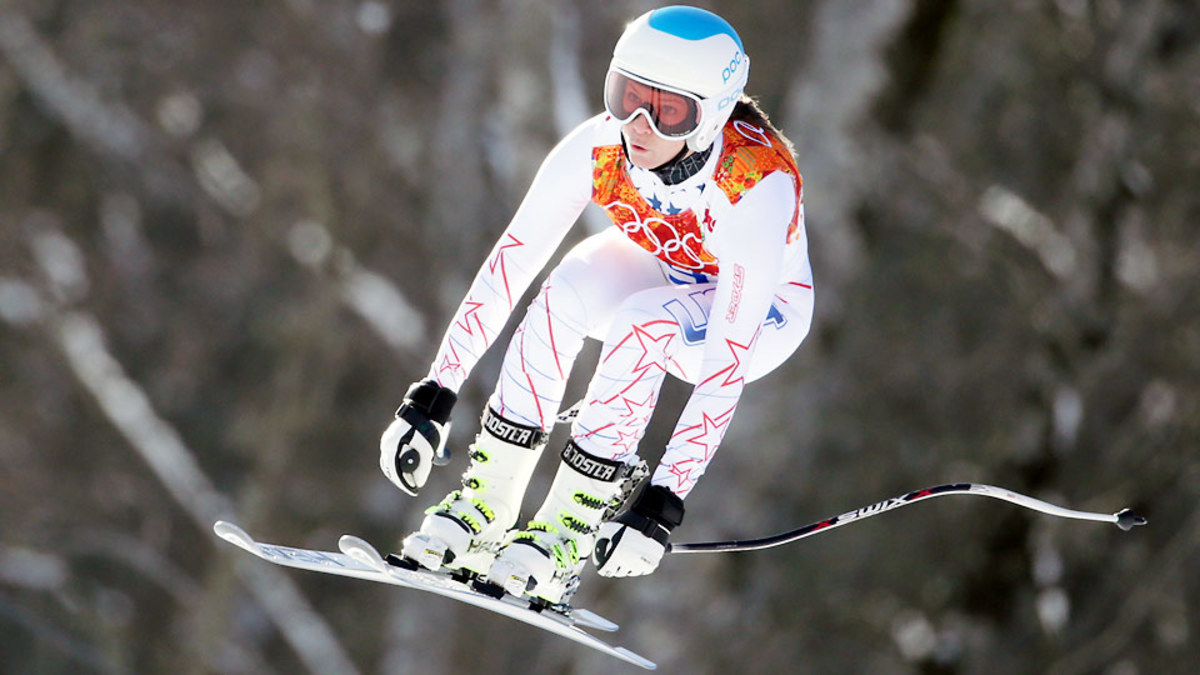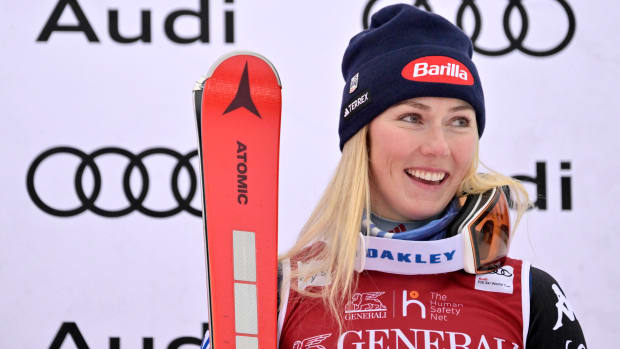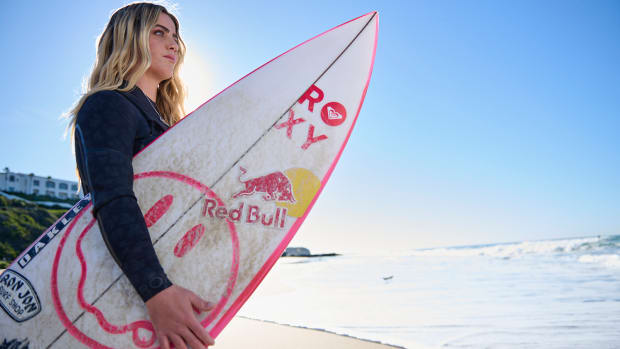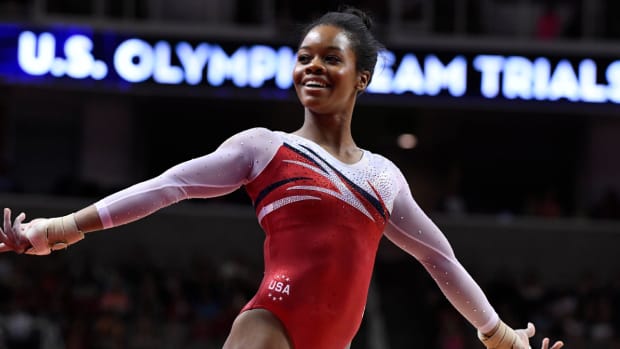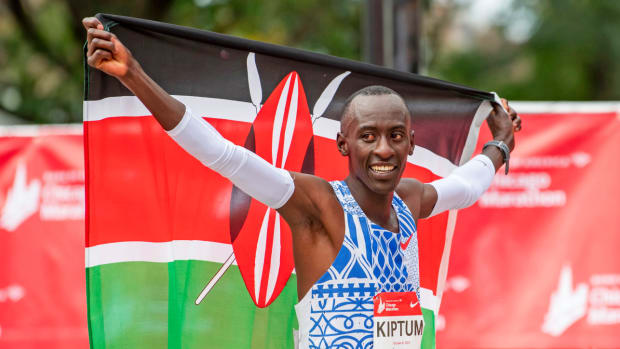Under-the-radar Julia Mancuso ready to shine on biggest stage again
KRASNAYA POLYANA, Russia -- We will never learn. The Winter Olympics have arrived and again U.S. alpine ski racer Julia Mancuso has been allowed to slip beneath the radar of expectation. Again, the quadrennial spotlight falls on other U.S. skiers and other U.S. stories -- Bode Miller’s resurgence, Mikaela Shiffrin’s precocity, Ted Ligety’s overdue date with a second gold medal and even the injured Lindsey Vonn’s absence.
Meanwhile, Mancuso punches her own personal clock, clicks into her bindings and prepares to mess with the narrative.
This has happened before. Go back to 2005. The alpine ski racing world championships came to the mountain village of Bormio in northern Italy, and they were to be a crowning moment for U.S. racers Miller and Vonn. Miller was brilliant with two gold medals, but Vonn struggled. Instead, it was Mancuso, then 20, who won two bronze medals. A year later, Mancuso slipped into the Turin Olympics scarcely noticed and won a gold medal in a snowy giant slalom, the only alpine medal for a U.S. woman.
And four years ago in Vancouver, where U.S. skiers won eight medals, Vonn took center stage by finally getting her downhill gold (and a bronze in the Super-G). But it was Mancuso who added two silvers to become the first U.S. female alpine skier to win three Olympic medals in her career. Vonn and Picabo Street, the best-known U.S. ski racers of recent vintage, each have two Olympic medals.
SI.COM STAFF: Sport-by-sport guide to Sochi Olympics
Mancuso, 29, arrives in Russia for her fourth Olympics begging to be ignored again. Since Vancouver, she has won just two World Cup races, and in the 2014 season, she hasn’t made a single top-three podium and didn’t crack the top 10 until late January.
Yet there are signs. She won a downhill training run at Cortina, Italy, and twice finished seventh in World Cup speed races there (once in downhill, once in Super-G), all within two weeks of the Games. Just as significantly, the water-packed snow in these craggy mountains 40 miles north of the Black Sea is similar to Whistler, British Columbia, where the 2010 Olympic alpine events took place. These things matter in alpine skiing.
“I know the kind of snow where I’ve done well, and this is definitely that snow,” Mancuso said earlier this week as she rode a train from the mountains to the Olympic Park for a media appearance. “And I really like how I’m skiing right now.”
Mancuso, 29, will ski four events here: The downhill-slalom combined on Monday, the downhill on Wednesday, the Super-G on Feb. 15 and the giant slalom on Feb. 18. In women’s downhill training Thursday morning, Mancuso finished third. Training results can be misleading, but Mancuso was expressive afterward. “It’s fun,” she said. “I like the snow.”
And there is history. Mancuso likened her mindset to 2010, what she called “an almost identical situation.” In that season, she arrived at Whistler without a victory in the 2010 World Cup season. But also like this year, she was rapidly improving, having finished third in a Super-G in St. Moritz, Switzerland, not long before the start of the Olympics.
What is most remarkable about Mancuso’s Olympic and world championship record (five medals overall) is that she has won only seven World Cup races in 15 years on the World Cup circuit. Vonn, by comparison, has won 59 World Cup races, the second-most of any woman in history and far more than any other U.S. woman. Yet Mancuso has three Olympic medals and Vonn two. (Vonn was injured in downhill training at the 2006 Games and unable to ski at full strength). It is a remarkable record of delivering high quality performances on the biggest stage.
It is also a quality that Mancuso struggles to quantify. “There are so many good racers who can’t put it together on race day,” Mancuso says. “It’s 99 percent mental. I just feel energized and excited when I get to the Olympics. Maybe I focus more. I know that people think of the Olympics as a giant competition, but actually to me it feels smaller than the World Cup. There’s nothing else going on, on the hill. Just the races. And my world gets smaller.”
Mancuso pauses, and then hammers the most important point of all. “Experience,’’ she says, “helps a lot.”
Her 2014 season started miserably. She finished 20th and 29th in two speed races in Beaver Creek, Colo., and then failed to get a second run in giant slalom, a race in which the 18-year-old wunderkind Shiffrin finished second. She could do no better than 17th in three speed races at Lake Louise, Alberta, where Vonn began what seemed to be a miraculous comeback from a re-injury to her reconstructed ACL.
LAYDEN: Lindsey Vonn withdraws from Sochi Olympics
Mancuso said the slow start was caused not only by her typical discomfort with early-season dry Colorado snow, but also by a switch to new racing boots made by Head. Instead of trying to adjust to the new boots, Mancuso panicked and switched back to her old boots, but her skis and bindings had been set with the new boots in mind. She had to switch again.
To a racer, boots and skis are like body parts, the integrated technology vital. “Eventually, I couldn’t do anything but come to terms with the fact that I had to use the new boots and be more precise with my skiing,” Mancuso said. “Things eventually got much better.”
In the pantheon of Olympic athletes, there seems little Mancuso can do to change her station. Some medalists become celebrities: Michael Phelps, Apolo Ohno and, most notably, Vonn. Mancuso has never approached this status, in part because none of her medals are gold, in part because of the long shadow cast by Vonn’s remarkable career and in part because society confers celebrity status capriciously.
Mancuso says she has come to terms with this. “I love to ski,” she says. “Everything else is a bonus.”
(In many ways, Mancuso is a contrarian. While many of her teammates, young and old, spend their offseason training at the U.S. Ski Team’s Center for Excellence in Park City, Utah, Mancuso has long gone home to Maui. Much of her training takes place on a longboard in the warm waters of the Pacific, and she has never apologized for this).
Her relationship with Vonn has always been complex. The two women have competed intensely against each other since they were adolescents, even to the point where Mancuso said this week, “Not having Lindsey at the Olympics is definitely weird. And it’s definitely a bummer.”
Four years ago in Vancouver I wrote a story about Mancuso’s two-medal performance in those Games. In that story Mancuso made comments about Vonn that were interpreted by many as critical of Vonn, which they were not. They were, in retrospect, sharply interpretive of the star-making culture of sport. Mancuso understands that even better now.
“Recognition for alpine skiers in America is difficult,” Mancuso said. “There’s probably only going to be one that’s really recognized. And I have incredible respect that Lindsey has such a high profile because it’s warranted. She’s the all-time winning female in the U.S. in our sport, which is incredible.” Whatever intramural tension might have once existed is long gone. And it would have been gone even if Vonn was in Russia and healthy.
Yet for Mancuso, there are always shadows. At age 36, Miller looks like a genuine threat to challenge for multiple medals. Ligety won a remarkable three world championships a year ago. Shiffrin is a genuine prodigy. Like Vonn in the past, they all deserve praise and hype. Mancuso deserves it, too. She’ll have to get it with another medal around her neck.
